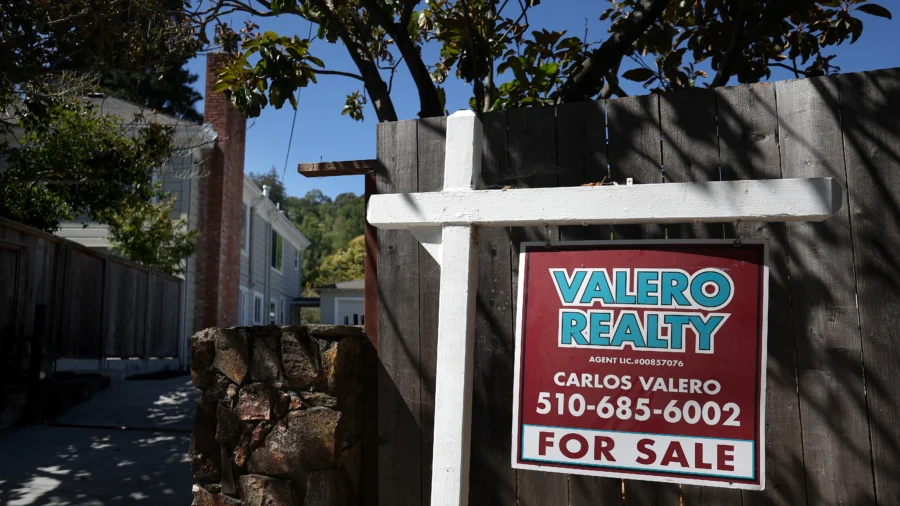A gauge measuring pending home sales activity fell to the lowest level in more than two decades last month amid an environment of high mortgage rates and political uncertainty, according to the National Association of Realtors (NAR).
Pending home sales declined 5.5 percent in July, with all four U.S. regions—Northeast, Midwest, South, and West—reporting monthly losses as well, according to an Aug. 29 press release. The Pending Home Sales Index (PHSI), which measures home sales based on contract signings, fell in July to the lowest reading since the index began in 2001.
“A sales recovery did not occur in midsummer,” said NAR chief economist Lawrence Yun.
“The positive impact of job growth and higher inventory could not overcome affordability challenges and some degree of wait-and-see related to the upcoming U.S. presidential election.” NAR speculates that some prospective buyers may be waiting for mortgage rates to drop.
Nirvan Ghosh, portfolio manager at The Palisades Group, said that the U.S. Federal Reserve may implement at least four rate cuts before this year ends. The lower rates combined with a potential boost in inventory could act as an incentive that brings more buyers into the market.
“Our expectation is that this expected drop in mortgage rates will continue to put pressure on housing prices given the pent-up demand from folks who have been sitting on the sidelines,” Ghosh said.
A sizable share of homebuyers are watching and waiting, as shown in an April survey from financial services firm BMO, which reported that 71 percent of aspiring homeowners were waiting for rate cuts before deciding to buy a home.
According to data from Freddie Mac, the average rate for a 30-year fixed-rate mortgage was 6.35 percent as of Aug. 29, which is more than double three years back.
“It’s clear that Americans are feeling the strain of elevated rates, and many are uncertain about how to go about navigating the ever-evolving housing market,” said Thomas Parrish, head of U.S. Retail Lending at BMO.
Sam Khater, chief economist at Freddie Mac, stated that even though mortgage rates are expected to continue declining and prospective buyers are closely watching the situation, a rebound in home purchasing activity “remains elusive until we see further declines.”
Interest Rate Activity
For mortgage rates to decline in any significant manner, a key factor will be the Federal Reserve bringing down its benchmark interest rate, which has remained in an elevated range of 5.25–5.5 percent for more than a year.
During the recent annual Jackson Hole Economic Symposium, Fed Chair Jerome Powell said that the “time has come for policy to adjust.”
“The direction of travel is clear, and the timing and pace of rate cuts will depend on incoming data, the evolving outlook, and the balance of risks.”
The majority of interest rate traders are expecting a 25 percent rate cut in the upcoming Fed meeting in September, with a few expecting a 50-point reduction.
Fernanda Kriese, an agent with real estate brokerage Redfin, pointed out that the November elections and expected drop in mortgage rates are “delaying buyers; a lot of them are waiting on the sidelines until November, hoping to get a lower rate and maybe more homes to choose from.”
Redfin noted that if mortgage rates were to fall in a significant manner, it could lead to more competition among buyers and thus could push up home prices further.
As long as mortgage rates do not fall significantly, the housing supply situation could also remain right due to the “lock-in” effect where many owners currently have low rates on their properties. As such, these owners have no incentive to sell their property since they may have to buy a new home at a higher rate.
Data from Redfin suggests that more than eight out of 10 U.S. homeowners have a rate below 6 percent, with almost a quarter with rates below 3 percent.
“I have a dozen or so homeowners who would like to sell, but aren’t willing to give up their 3 percent interest rate for one that’s more than twice as high,” said Blakely Minton, a Redfin Premier real estate agent in Philadelphia. “Many of those sellers will list if rates get back down to 5 percent.”
From The Epoch Times

